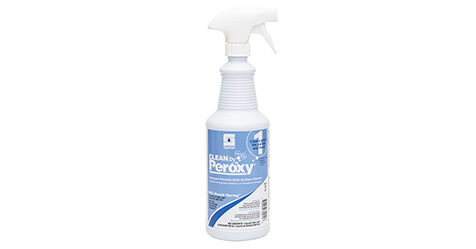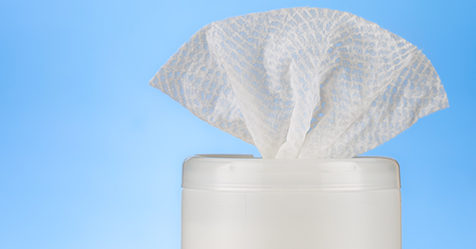When your business is hired to clean carpet in a hotel or another commercial facility, you might expect your clients to provide you with all the pertinent information about the carpet, including the materials of which it’s made and instructions for proper cleaning.
Forget that expectation, and have a lighter handy, according to Marty Jollette, vice president of training and operations at Renue Systems, a provider of deep cleaning services to the hospitality industry.
“We always ask the client if they have cleaning guidelines or at least know what the carpet is made of, and in most cases, they don’t,” Jollette said. “That’s when we’re left doing some fiber
identification through burn or chemical tests.”
Natural vs. synthetic flames
High-end carpeting is made of wool, but many facilities purchase synthetic carpeting made of polyester, nylon, or acrylic. “We see a lot of nylon carpet in hotels as it is cost-effective,” Jollette said,
adding, “But you can’t tell what a carpet is made of simply by looking at it.”
Burn tests are the easiest method to identify carpet fibers. To conduct a burn test, cut a small tuft of carpet fiber from an inconspicuous place, such as in a corner or under furniture, hold it with a tweezer, and then ignite it with a lighter over a piece of white paper to catch any ash. Pay attention to flame color and odor, and note the presence of smoke or ash. All these characteristics will help you identify the carpet fiber.
“If the fiber is made of wool, the flame will be orange then sputter out quickly because wool is flame-resistant; it won’t stay lit because it has flame-retardant capabilities,” Jollette said. He
added that wool fibers don’t give off smoke when they are burning, and their flames create black ash that crumbles to a coarse powder.
Cotton fibers also will have an orange flame without any smoke. They will burn evenly, creating ashes that crumble to a fine powder.
Synthetic fibers may create different colored flames other than orange when they are lit on fire. For example, nylon and olefin fibers will have a blue flame that extinguishes with a puff of white
smoke. Burning polyester will have an orange flame with black smoke, acrylic will have a white or orange flame with black smoke, and both will leave behind hard, black, non-smudging ash instead of powdery ash. “What you are left with is a like a hard piece of plastic, a hard, crusty ball,” Jollette said.
The smell of the burning fibers can also give clues as to their identity. Wool fibers smell like burning hair, and cotton fibers smell like burning paper. Burning nylon has an unusual odor that
can smell like celery, olefin smells like asphalt, and acrylic smells like burning meat. “Polyester gives off a smell that is almost fruity,” Jollette said.
Chemical reactions
If a burn test is inconclusive in identifying a carpet fiber, the next step is chemical testing. These tests are more complicated as they require various chemicals that most professional cleaners will not have readily on hand, such as sulfuric acid, formic acid, hydrochloric acid, or acetone.
“We almost never use acid testing; most cleaners will use the burn test as it’s a lot safer and a lot quicker,” Jollette said.
However, the extra effort of using chemicals can pay off in accurate and definitive results.
Jollette explained that certain fibers dissolve in specific acids. For example, wool fibers dissolve in chlorine bleach, cotton fibers dissolve in sulfuric acid, and nylon fibers dissolve in formic acid. Other synthetic fibers dissolve in chemicals that may not be easy to obtain. For instance, polyester dissolves in meta cresol, olefin dissolves in dihydronaphthalene, and acrylic dissolves in
dimethylformamide.
Alkaline vs. acidic cleaning agents
Jollette cautions against cleaning a carpet until you are certain you have correctly identified the carpet fibers. “You need to identify the fiber to know the right cleaning agent to use,” he said. “Otherwise, you could damage the carpet and void its warranty.”
Jollette explained you need to match the carpet type to a cleaner with the proper pH scale. Acidic cleaning agents are best used on natural fibers like wool, while alkaline cleaning agents are best
used on synthetic fibers. “If you use a chemical with the wrong pH for the fiber type, you can cause irreversible damage to the carpet,” Jollette said.
He added that regardless of the cleaning agent used, most carpet manufacturers recommend hot water extraction for a deep cleaning method that removes the highest soil load.
Unusual situations
Although Jollette and his team are generally successful in correctly identifying and cleaning carpets commonly used in the hospitality industry, he does admit to a few unconventional cases that almost stumped them. For instance, they have encountered some unfamiliar fibers, especially in area rugs made of new materials.
“We usually don’t work with area rugs,” he explained. “Although we eventually got to the bottom of it, we had a hard time at first identifying the fibers in an area rug made of a Triexta/polyester blend.”
Triexta (technical name polytrimethylene terephthalate) is a new carpet material on the market that is water, mold, and mildew resistant. It is made of a synthetic material that is a subclass
of polyester.
Jollette and his team have also been encountering area rugs made of Tencel, a cost-effective fiber derived from eucalyptus trees.
“We are seeing more rugs made of this brand of semi-natural fiber,” he said.
Jollette also recalled a case of mysterious glowing carpet. “Once we placed an alkaline cleaner bottle on a carpet, and when we lifted the bottle, the carpet lit up in a light blue ring; it was actually
glowing,” he recalled. “We were confused, but we finally figured out that dye indicators were used in the [carpet] manufacturing process to indicate the dye bath was too high in alkalinity. Our chemical bottle was wet on the bottom with chemical when we placed it down on the carpet, and it triggered those dye indicators. We corrected this phenomenon by spraying an acid rinse on
the carpet and that got rid of the glowing dye indicators.”




